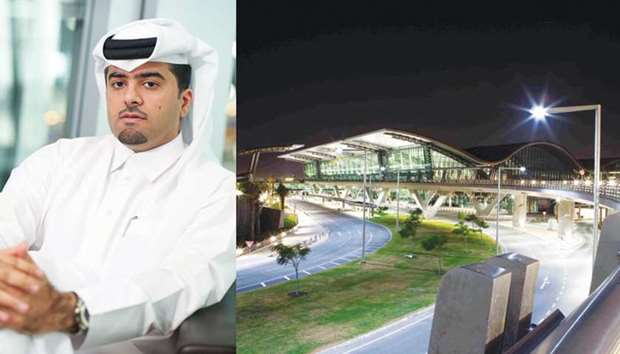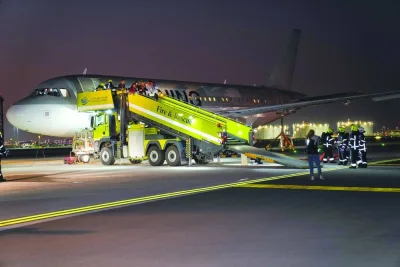The Hamad International Airport is accelerating its capacity expansion plans as Qatar is gearing up to host the 2022 FIFA World Cup with approximately 96,000 passengers to welcome per day during the world cup, said HIA chief operating officer Badr al-Meer.
“Our facility expansion also aims at increasing the cargo capacity to 2.8mn from the current 1.4mn tonnes per year upon completion of second cargo terminal, as well as the airport terminal expansion, which will increase our passenger capacity from 30mn passengers to more than 50mn per year. So far we are on track with achieving this ambition by 2020,” al-Meer told Gulf Times.
With Qatar Airways’ growing network now connecting Doha directly to 14 new destinations– combined with the airports natural growing passenger traffic, increased aircraft movements, new foreign airlines joining the network, as well as increased cargo activity, the HIA sets its main priority to manage growth and to focus efforts and investment on airport capacity.
Al-Meer said an airport’s healthy development depends on multiple factors, all contributing to steady and sustainable growth. In the case of the HIA, one of these main factors focuses on a highly passenger-centric approach.
“Due to this, today, HIA is currently one of the best airports in the world in terms of passenger amenities and connectivity and fast emerging as a major global gateway in the Middle East,” al-Meer said.
The HIA’s operational excellence aims at giving peace of mind to passengers through a highly personalised, connected and hassle-free experience from arrival and transfers, to boarding, achieving minimal and seamless connection time.
“We can achieve this thanks to the use of cutting-edge technology at check-in, security scanners and fully automated baggage systems with the capacity to handle more than 19,000 bags every hour,” al-Meer explained. “Cutting-edge technology is integrated at every touch point at the airport and across all our facilities.”
He said the MoU signed with SITA is also the beginning of the HIA’s exploration phase of new technologies aimed at designing a seamless and friction-free travel experience while ensuring the highest safety and security standards.
“We will also explore the potential use of augmented reality and virtual reality for operational concepts: some airlines are already using this technology for in-flight entertainment and we are interested in how the technology can be used on the ground,” al-Meer said.
“A second cargo terminal project is also underway with Phase 1 scheduled to be completed in 2021, which will bring the total annual cargo capacity to 4.6mn tonnes,” the COO said.
The HIA’s efforts towards innovation and its strategic alliances with key partners such as SITA, all contribute towards its ‘Smart Airport’ vision that was officially launched in May 2016 under the patronage of HE the Prime Minister and Minister of Interior Sheikh Abdullah bin Nasser bin Khalifa al-Thani.
“Our aim is to empower our passengers to experience a seamless journey at their own pace, all the while keeping them informed about what matters to them,” explains al-Meer.
The HIA introduced ‘Smart Airport’ features early on and currently offers self-service capability for check-in, bag-drop, pre-border control and border control checks, as well as the HIA mobile application that replaces information desks and customer information points.
“The next step will focus on facial recognition and will link passenger biometric data to the boarding pass and passport during the check-in process,” al- Meer clarified.
The HIA and its partnership with SITA also aim to carry out trials to evaluate the effectiveness of robots for passenger facilitation, blockchain technology for rapid and secure sharing of data across stakeholders, and the potential use of augmented and virtual reality for operational concept, he added.

HIA chief operating officer Badr al-Meer. The HIA’s operational excellence aims at giving peace of mind to passengers through a highly personalised, connected and hassle-free experience, he said. Right: A view of the Hamad International Airport. The HIA is currently one of the best airports in the world in terms of passenger amenities and connectivity and fast emerging as a major global gateway in the Middle East.



